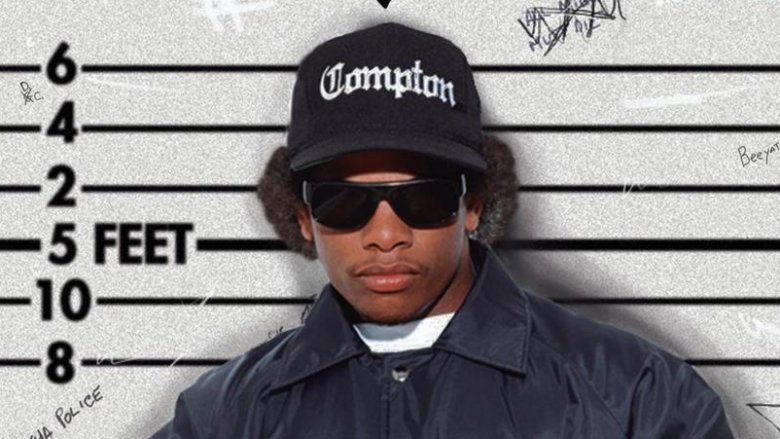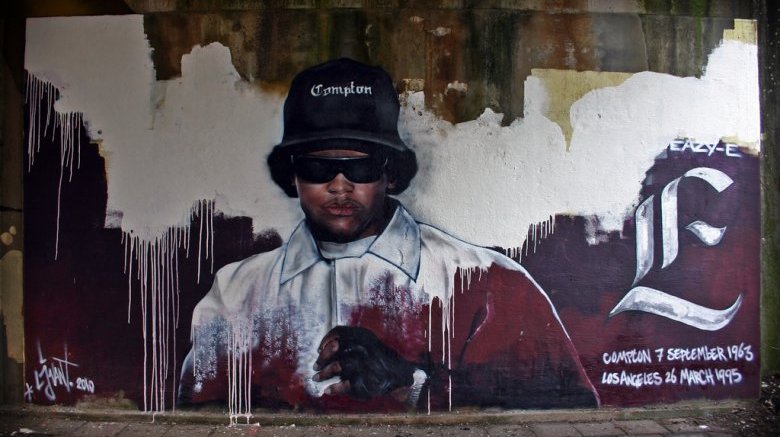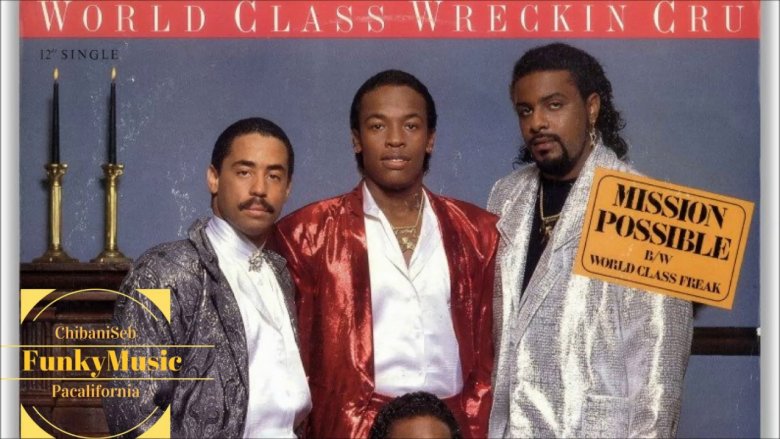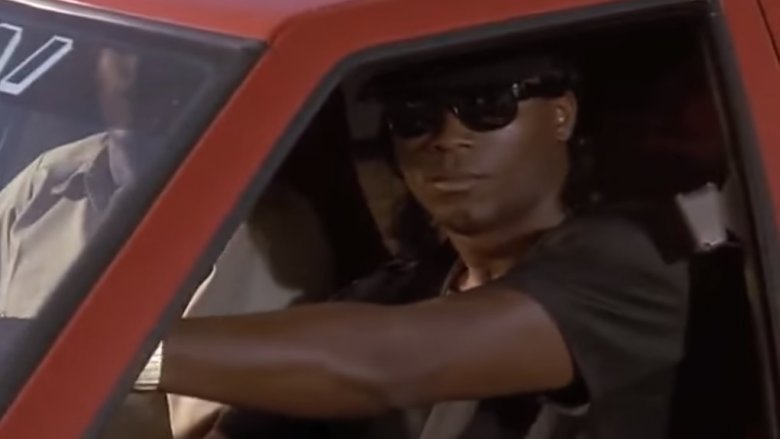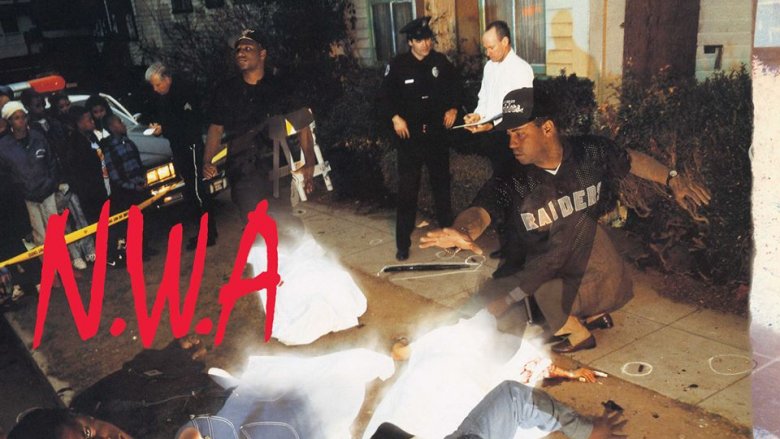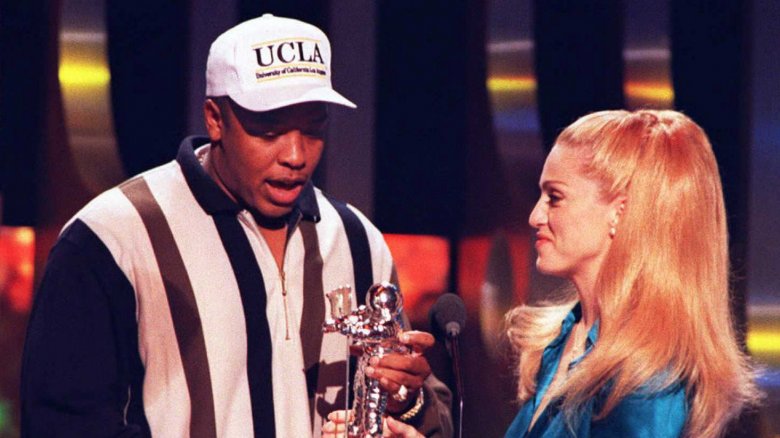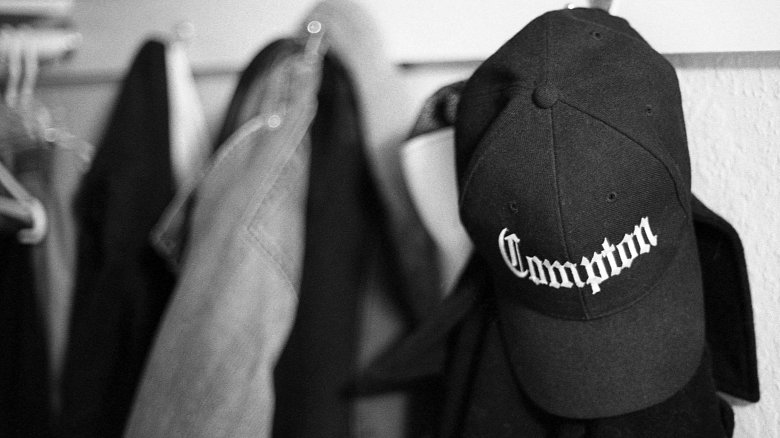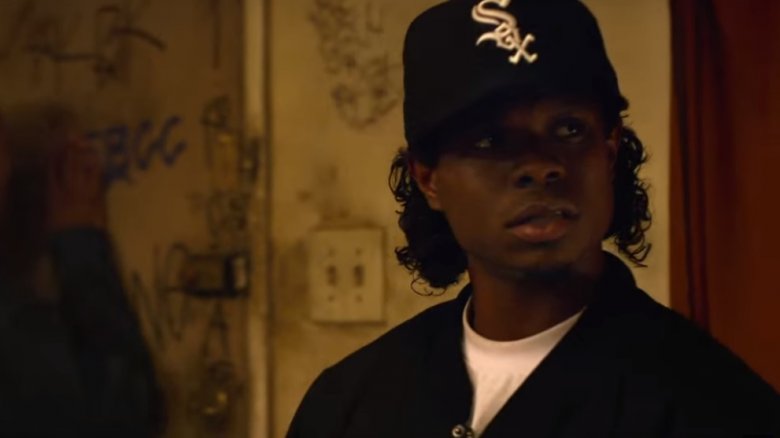Eazy-E's Tragic Real-Life Story
We may receive a commission on purchases made from links.
Eazy-E's life was brief and eventful. Born Eric Lynn Wright in 1964, his story began on the streets of Compton and ended in 1995 in a medical center in downtown Los Angeles. In the years between, however, he amassed a small fortune through drug dealing, founded a legendary record label, and formed one of the greatest acts in hip-hop history: N.W.A.
Much like many other icons of the genre, Wright's life — beneath the music videos and record deals and parties — was marked with hardship, violence, crime, and death. The eventual happy ending he might have found through his music was never to be. At the age of 30, only a decade into his career, he succumbed — not to feuding or gang crime, but to disease. Eazy-E's estate and family have been embroiled in a slew of troubles ever since his death, but even their squabbling can't touch the unassailable legacy of the "Godfather of Gangsta Rap."
Born on a battlefield
Compton was a dangerous place to be in the 1980s. What had once been a quiet suburb of L.A. — known, if anything, for being a sought-after place of residence for affluent Americans — soon became a home to a struggling lower class. As the middle-class demographic fled the area in the wake of the 1965 Watts riots, crime began to seep in. During the 1970s, Compton was afflicted by gang warfare (specifically between the Crips and Bloods), a burgeoning drug trade, and a police force whose approach to violent crime was draconian to say the least. By 1990, Compton's murder rate was a ridiculously high 91 homicides per 100,000 residents.
This was the world that Eric Wright was born into. His father was a postal worker and his mother was employed by a local grade school. Neither their family, their home, nor their neighbors were fortunate in circumstances. So how did Eazy-E do it?
Dope man or victim?
After dropping out of school in 10th grade, Wright became a drug dealer, not only to provide himself with a lucrative source of income, but also to survive on the chaotic streets of Compton. Wright's future manager Jerry Heller wrote in his memoir that "no one survived on the streets without a protective mask. No one survived naked. You had to have a role. You had to be 'thug,' 'playa,' 'athlete,' 'gangsta,' or 'dope man.' Otherwise, there was only one role left to you. 'Victim.'"
Not much is known of Eazy-E's time as a drug dealer. Even Heller himself, who eventually came to doubt the extent to which Wright slung dope, had trouble getting anything out of him. But the reputation he acquired from his time on the streets would last well into his career as a rapper, eventually cementing his legacy as the gritty, authentic face of N.W.A.
The rise of hip-hop
Before long, Wright decided to stop dealing drugs (if he'd ever actually been dealing) and start making music, possibly spurred on by the violent death of his cousin. At the time, the L.A. hip-hop scene was just beginning to take off. It had originated in the '70s with Uncle Jamm's Army and eventually the foundation of World Class Wreckin' Cru in 1983. The first West Coast rap label was launched in 1981 by Duffy Records; a few years later, Mixmaster Spade set up the Compton Posse, and gangsta rap as we know it was born.
Eric Wright, however, had spent years as little more than a street-level dope dealer. With no contacts in the music world, no high school diploma, and no discernible prospects, an uphill battle was inevitable. He began, in the mid-'80s, by setting up an ad hoc studio in the garage of his parents' home and using it to make his first recordings.
Eazy goes into business
In 1986, Wright teamed up with Jerry Heller to form Ruthless Records. According to his memoir, Heller fronted $250,000 of his own money to begin the label, and would go on to sink another million over the next few years. In exchange, he was given a 20 percent cut of Ruthless' profits. The business itself, however, would be entirely Wright's.
Soon after, Wright met and begun to work with two other local musicians: Andre Young and O'Shea Jackson. Both came from wealthier backgrounds than Wright but had each discovered their own passion for gangsta rap. Young and Jackson were writing material for HBO, one of the groups Wright had signed to Ruthless, but when that group rejected the song, Wright decided to record it himself. Young, Jackson, and Wright — under the names Dr. Dre, Ice Cube, and Eazy-E — recorded "Boyz-n-the-Hood" in 1986 and soon began collaborating together under the name N.W.A.
N.W.A. enters the spotlight
N.W.A., who soon took on MC Ren, DJ Yella, Arabian Prince, and The D.O.C. as members, enjoyed a rise to fame that was nothing short of meteoric. The 1988 album Straight Outta Compton went double platinum and dragged gangsta rap — as well as L.A.'s violent gang scene — into the public spotlight. Their infamy only grew further after the FBI issued the group's distributor a warning letter after the release of "F*** tha Police."
Controversy followed N.W.A. like a shadow. A few members faced criminal charges in the early '90s, including Dr. Dre, who became embroiled in a legal scandal after attacking the host of a rap show in 1991. Dre also submitted to house arrest after assaulting a record producer and a police officer. Eazy, however, found another way to court criticism: In 1991 he attended a fundraising lunch for then-President George H.W. Bush — and donated $2,500 to his cause.
The slow dissolution of N.W.A.
N.W.A., however, was to be not much more than a brief (if bright) flash in the pan. In 1989, Ice Cube left the group after a dispute arose over his royalties, an issue made all the worse by the personal animosity between Cube and N.W.A.'s manager, Jerry Heller. Despite Cube's departure, N.W.A. continued to release music, with plenty of it attacking him for his apparent betrayal of the group. Cube, naturally, responded in turn, criticizing N.W.A., Heller, and Eazy on a number of his solo tracks — most notably on "No Vaseline." A diss war soon followed, and everyone got more and more angry.
In 1992, Dre himself became unhappy with affairs over at Ruthless Records. He and The D.O.C. left to join Suge Knight's label, Death Row Records. Only six years after Eazy-E had started it, N.W.A. was over, and Eazy, Dre, and Cube each began to focus on their solo careers.
A grim diagnosis
As early as 1994, Eazy had begun to experience the symptoms of an apparent bout of asthma. It wasn't until early 1995, however, that he finally checked himself into the Cedars-Sinai Medical Center in Los Angeles. The doctors there, to his surprise, diagnosed him with AIDS. At the time, HIV/AIDS was popularly (and falsely) believed to be a problem unique to the LGBT community, but Eazy's doctor suggested that he likely contracted the virus through heterosexual contact.
Just who gave AIDS to Eazy has been the subject of some controversy in the years following his death, and conspiracy theories as to the origins of his illness have been passed all around, peddled by people as close to him as his family and his colleagues. A slew of people have been accused of murdering Eazy — including his rival Suge Knight, his wife Tomica, and even Jerry Heller himself — but no real evidence has ever appeared to support these theories.
Eazy's last days
Eazy's condition worsened quickly. Knowing the end was near, he made amends with the people he'd fallen away from over the years — including Dr. Dre and Ice Cube — and issued a final statement addressed to his fans. This message reminisced about Eazy's career (and N.W.A.), implored his young fans "to learn about what's real when it comes to AIDS," and insisted that he had nobody to blame except himself for his contraction of the disease.
Eazy went on to reveal that he had recently married his girlfriend, Tomica, calling her a "kind and wonderful mother." He also admitted that he had seven other children by six women, said that he loved all of his kids and wondered whether "success was too good for me." He ended the statement with:
"Now I'm in the biggest fight of my life, and it ain't easy. But I want to say much love to those who have been down to me. And thanks for your support. Just remember: It's your real time and your real life."
The war over the Wright estate
Eric Wright died on March 26, 1995, only a month after his diagnosis. His death, however, was just the beginning of a long period of legal turmoil that would last well into the 21st century. By April 1995, a battle had begun over the ownership of Eazy's estate, including Ruthless Records, estimated to be worth up to $30 million. The first lawsuit of many came from Mike Klein, a former Ruthless employee, who questioned the legality of Eazy's marriage to Tomica. Klein claimed Eazy had been heavily sedated and "forced to sign" his marriage certificate. Klein also insisted Eazy had given him half of Ruthless Records in 1992.
The war over Eazy's legacy would continue up until 2017 and beyond. In August of that year, Tomica Woods-Wright (who succeeded in taking control of Ruthless in 1995) would sue her own stepson, Eric Darnell Wright, for trademark infringement after he formed a company using the name N.W.A. and attempted to secure a trademark for Ruthless Records Inc. for his online retail store.
The legacy of Eazy-E
Eazy-E's life may have been short, but his legacy is nothing short of momentous. N.W.A. is only one of many rap groups that credit their existence to Eazy's life and career. The Black Eyed Peas' Will.i.am has named Eazy as his inspiration and mentor, and Dr. Dre and Ice Cube would never have gotten as big as they did without Eazy's influence. In an interview with BET, Will.i.am pointed out that "it wasn't called gangsta rap before N.W.A. came out."
Eric Wright's spirit has also lived on in his seven children, including his daughter, E.B. Wright, who in 2013 began working on her own documentary about her father's life. More recently, in 2015, Eazy-E was the subject of the Oscar-nominated film Straight Outta Compton, which charted the rise of N.W.A. and was dedicated to Eazy himself.
